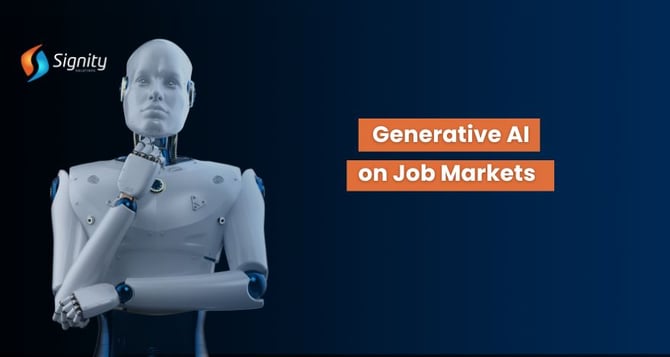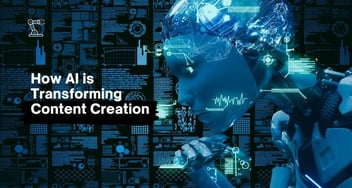The Effects of Generative AI on Job Markets
Generative AI impacts job markets by automating tasks, creating new roles, and requiring upskilling. It challenges traditional job structures, driving both displacement and innovation

In recent years, the rise of generative artificial intelligence (AI) has sparked both excitement and apprehension about its potential impact on job markets worldwide. Generative AI, powered by sophisticated algorithms and neural networks, has the remarkable ability to create new content, including text, images, and music, with minimal human intervention.
While this technology offers unprecedented opportunities for innovation and efficiency, it also raises important questions about its effects on employment and labor markets. In this article, we'll explore the implications of generative AI on job markets and examine potential strategies for navigating this evolving landscape.
Understanding Generative AI
Generative AI refers to a class of artificial intelligence techniques that enable machines to generate new content that mimics human creativity. These techniques include generative adversarial networks (GANs), variational autoencoders (VAEs), and transformer-based language models like GPT (Generative Pre-trained Transformer).
 By analyzing large datasets and learning underlying patterns, generative AI models can produce realistic and coherent outputs across various domains, from text generation to image synthesis.
By analyzing large datasets and learning underlying patterns, generative AI models can produce realistic and coherent outputs across various domains, from text generation to image synthesis.
Displacement and Transformation of Jobs
The widespread adoption of generative AI has the potential to disrupt traditional job markets in several ways. On one hand, automation of creative tasks could lead to the displacement of jobs in industries such as content creation, graphic design, and music composition. As generative AI becomes increasingly proficient at generating high-quality content, human involvement in these tasks may diminish, resulting in job losses and restructuring within affected sectors.
Emergence of New Opportunities
While the automation of creative tasks may lead to job displacement in certain industries, it also creates new opportunities for employment and innovation. As generative AI tools become more accessible, individuals and organizations can leverage them to streamline workflows, enhance productivity, and unlock new avenues for creativity. Jobs may emerge in areas such as AI model development, data curation, and content customization, where human expertise complements the capabilities of generative AI.
Reskilling and Adaptation
In response to the changing job landscape driven by generative AI, reskilling and adaptation will be crucial for individuals seeking to remain competitive in the workforce. Workers in industries vulnerable to automation may need to acquire new skills, such as data analysis, machine learning, and human-AI collaboration, to transition into roles that leverage generative AI technologies. Lifelong learning and continuous upskilling will become essential for navigating career transitions in an AI-driven economy.
Ethical Considerations and Bias Mitigation
As with any technology, generative AI raises important ethical considerations, particularly regarding bias and fairness. Generative AI models trained on biased datasets may perpetuate existing social, cultural, or gender biases in their outputs, leading to ethical dilemmas and societal harm.
Mitigating bias in generative AI requires proactive measures, including diverse and representative dataset curation, algorithmic transparency, and rigorous testing for bias detection and mitigation.
Collaboration Between Humans and AI
Ultimately, the impact of generative AI on job markets will depend on how effectively humans and AI collaborate to harness the technology for mutual benefit. Rather than viewing generative AI as a threat to employment, organizations can embrace it as a tool for augmenting human creativity, enhancing productivity, and driving innovation. By fostering collaboration between humans and AI, businesses can leverage their unique strengths to create value and address complex challenges in the digital age.
Conclusion
In conclusion, the rise of generative AI presents both challenges and opportunities for job markets worldwide. While automation of creative tasks may lead to job displacement in certain industries, it also creates new possibilities for employment, innovation, and economic growth.
By embracing lifelong learning, reskilling, and collaboration between humans and AI, individuals and organizations can navigate the evolving job landscape and harness the transformative potential of generative AI for the benefit of society as a whole.














